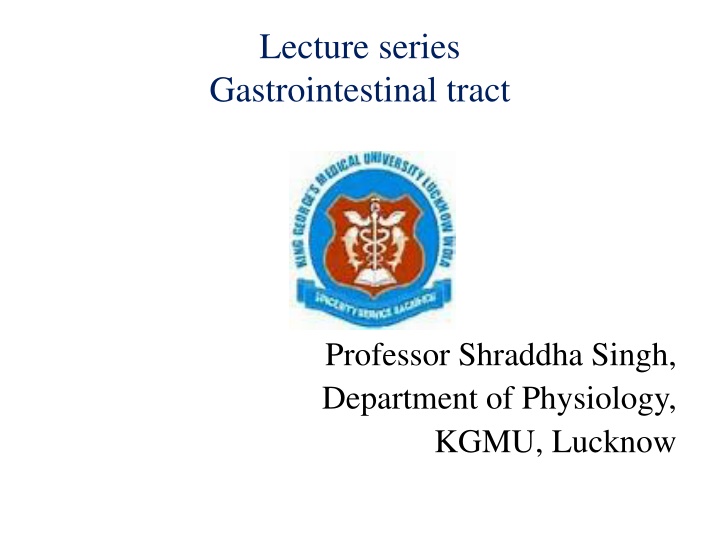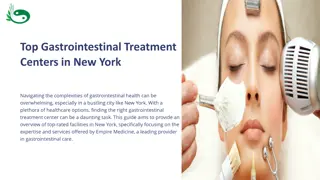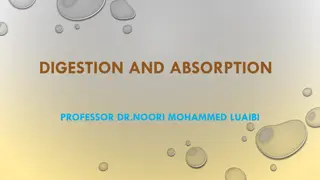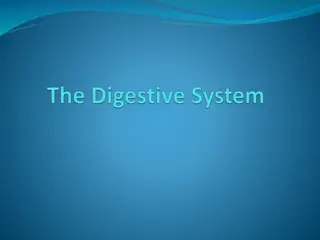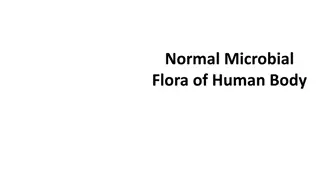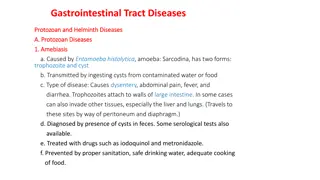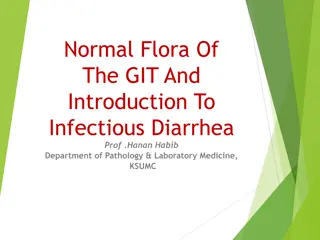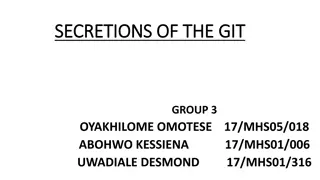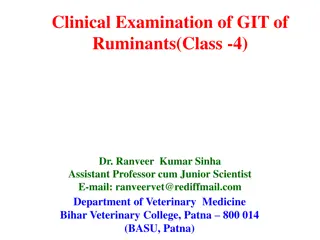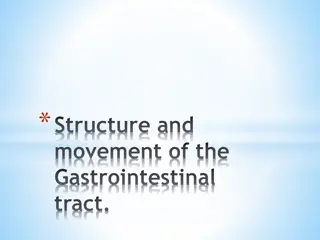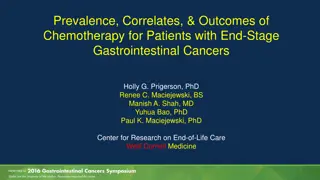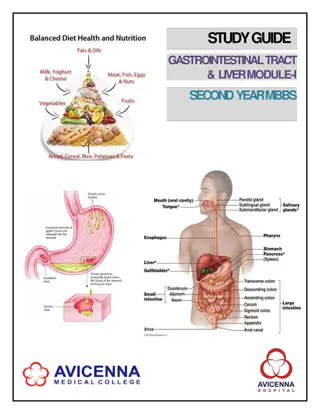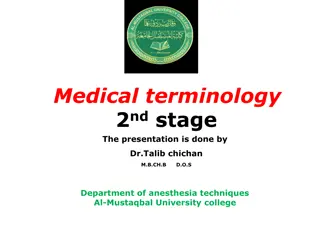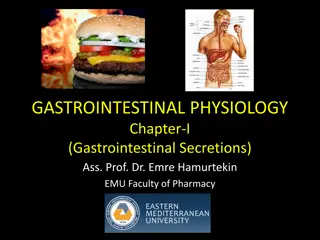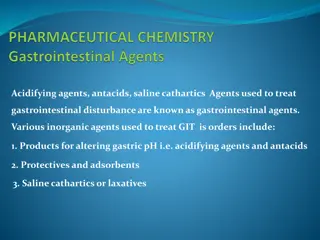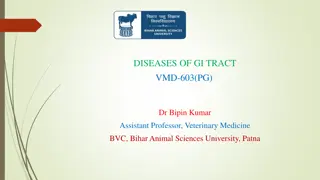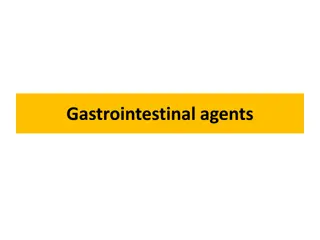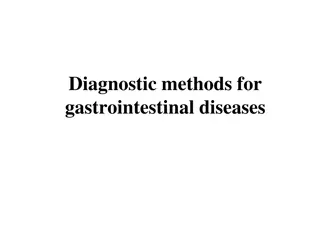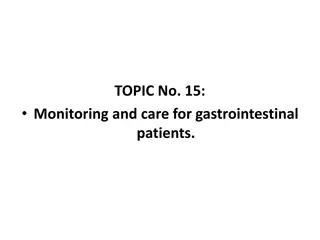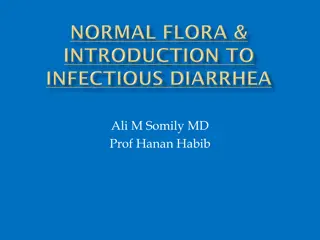Lecture series Gastrointestinal tract
In this lecture series, explore the physiological anatomy of the pancreas, its exocrine and endocrine functions, and the role of pancreatic secretions in digestion and metabolism. Learn about the composition of human pancreatic juice, secretion of water and electrolytes, and bicarbonate ion production. Dive into the understanding of the pancreas's crucial role in maintaining digestive balance and hormonal regulation.
Uploaded on Mar 05, 2025 | 0 Views
Download Presentation

Please find below an Image/Link to download the presentation.
The content on the website is provided AS IS for your information and personal use only. It may not be sold, licensed, or shared on other websites without obtaining consent from the author.If you encounter any issues during the download, it is possible that the publisher has removed the file from their server.
You are allowed to download the files provided on this website for personal or commercial use, subject to the condition that they are used lawfully. All files are the property of their respective owners.
The content on the website is provided AS IS for your information and personal use only. It may not be sold, licensed, or shared on other websites without obtaining consent from the author.
E N D
Presentation Transcript
Lecture series Gastrointestinal tract Professor Shraddha Singh, Department of Physiology, KGMU, Lucknow
Pancreas (Essential exocrine gland) Gland with both exocrine and endocrine functions Location: retro-peritoneum, 2ndlumbar vertebral level 15-25 cm long 60-100 g Extends in an oblique, transverse position Parts of pancreas: head, neck, body and tail
Exocrine pancreatic secretions The pancreas acts as an exocrine gland by producing pancreatic juice which empties into the small intestine at hepato pancreatic ampulla The pancreas also acts as an endocrine gland to produce insulin & glucagon.
Basic functions of pancreatic secretions It plays an important role: in digestion of lipids proteins and carbohydrates, in metabolism since it produces insulin and other hormones. in neutralizing the pH to become suitable for the action of the pancreatic digestive enzymes.
Composition of normal human pancreatic juice Cations: Na +, K +, Ca 2+, Mg 2+ pH approximately 8.0 Anions: HCO 3 , Cl , SO 42 , HPO4 2 Digestive enzymes (95% of protein in juice) Exocrine cells produce 1200 to 1500 ml pancreatic juice /day
Secretion of water and electrolytes Na, K the same as in plasma Bicarbonate concentration up to 5 times higher than in plasma
Bicarbonate Ion Production in Pancreas CO2 diffuses to the ductule cells from blood CO2 combines with H2O in presence of CA to form H2CO3 H2CO3 dissociate into HCO3- and H+ . The HCO3- is actively transported into the lumen.
Fate of hydrogen ion The H+ formed are exchanged for Na+ ions by active transport through blood , which will diffuse or actively be transported to the lumen
Transport of water from cell to duct The movement of HCO3- and Na+ ions to the lumen causes an osmotic gradient causes water to move from blood to ductule cells of the pancreas producing eventually the HCO3- solution
Secretion of Pancreatic Juice Secretion of pancreatic juice is stimulated by: Secretin: Occurs in response to duodenal pH < 4.5. Stimulates production of HC03- by pancreas. Stimulates the liver to secrete HC03- into the bile.
CHOLECYTOKININ(CCK) (CCK IS POLYPEPTIDE ,33 AMINOACIDS) Occur in response to fat &protein content of chyme in duodenum & upper jejunum from I cells Stimulate production of pancreatic enzymes Enhance secretin secretion Relaxation of the sphincter of oddi Contraction of GB to release bile
Mechanism of enzymes activation Proteolytic enzymes secreted as inactive precursors chymotrypsinogen procarboxypeptidase enterokinase trypsinogen trypsin chymotrypsin carboxypeptidase
Protein trypsin chymotrypsin Peptides Carboxypeptidase Amino acids
starches glycogen Pancreatic alpha amylase Disaccharides and trisaccharides
Cephalic and gastric phase of pancreatic secretions
Summary of the pancreatic regulation ENDOCRINE CONTROL NEURAL CONTROL acid chyme in duodenum psychic stimuli stretch of stomach enteroendocrine cells stimulated increased parasympathetic impulses via vagus nerve increased secretin increased cholecystokinin increased pancreatic secretion increased secretion of enzymes increased secretion of bicarbonate ions
Applied Acute pancreatitis (inflammation in pancreas) Major causes - Gall stone - Alcohol Ingestion Minor causes Over secretion of Ach Hyper- triglyceridemia Ingestion of pesticides Scorpion toxins
Pancreatitis Inflammation of pancreas It can be acute or chronic Cause-Alcohol (most common) - Gall stone Blockage of duct cause accumulation of panceatic enzyme trypsinogen which activate into trypsin Carboxypolypeptidase,chymotrysin also get activated These proteolytic enzyme digest large portion of pancreas and destroy it.
References Lippincott s Illustrated Reviews: Physiology (2013) Medical Physiology, Updated second edition (walter F. Boron, MD, phd) Berne & levy, physiology, sixth edition, updated edition Ganong s Review of Medical Physiology, 26 t h e d i t i o n
